Habitar la tecnología, Agustina García del Rio
Introducción
La palabra tecnología la asociamos constantemente con el concepto de avanzar y evolucionar, de mejorar lo existente. Cuanto más tecnológico algo es, la gente más lo desea.
La etimología de esta palabra nos indica otra cosa, que es la unión de “arte” y “tratado”. Podríamos decir entonces, que la tecnología es la aplicación de un conjunto de conocimientos y habilidades con un claro objetivo: conseguir una solución a los problemas del ser humano o satisfacer sus necesidades en un ámbito concreto.
Remontémonos a 1909, donde Filippo Tommas Marinetti publica “Fundación y manifiesto del Futurismo”. Este documento da comienzo al movimiento futurista, que se aplica a la arquitectura pintura, escultura y fotografía.
Renato de Fusco en su libro “Historia de la arquitectura contemporánea” dice:
“…El futurismo fue el primer movimiento de vanguardia, propiamente dicho, y encarnó todas las características de ésta: la ruptura con el pasado, el maquinismo, el activismo, el belicismo, las actitudes provocadoras y profanadoras, el fetichismo por el Zeitgeist que, independientemente de la modernolatría, proclama una posición anticipadora del espíritu del tiempo futuro, de ahí el afortunado nombre del movimiento.
El futurismo nace con el manifiesto de 1909, redactado por Marinetti, que considera los aspectos generales del movimiento. […]
La arquitectura futurista, latente en el manifiesto y en los sugestivos dibujos de Sant’Elia, traduce en formas e ideas arquitectónicas las premisas generales del movimiento:
-rechazo de todos los estilos tradicionales
-destrucción del ambiente preexistente
-exaltación de la producción mecánica
-nuevas tipologías de edificación
-arquitectura para las masas
-empleo de nuevos materiales
-temporalidad y continua renovación de las construcciones
-dinamismo de la forma arquitectónica producido por el propio dinamismo que introducen en los edificios los ascensores en movimiento
-la expansión de la arquitectura hacia la urbanística…”
Propongo ver a la tecnología desde otra perspectiva. Verla como el lenguaje del avance de la sociedad (no por lo que la gente obtenga de ella), sino por cómo la tecnología sirvió como base para crear utopías que solucionaran la vida del hombre en la tierra, en esos momentos donde nuestra forma de habitar, tal como la conocemos, se creía no podría seguir existiendo.
En este trabajo, el objetivo es encontrar la influencia del movimiento futurista en la arquitectura del siglo XX. Descubrir qué premisas se mantienen como inamovibles a lo largo de este período, aunque los que las ejercen provengan de diferentes locaciones y realidades culturales.
Entender al futurismo como un punto de partida para la creación de utopías que aunque algunas se concreten y otras no, no pierden su intención. La intención de crear en pos de una solución para el bienestar habitacional del ser humano, acción que para mi es suficiente, aunque el ideal llevado al mundo real no pueda subsistir.
No hay una fórmula que nos lleve al resultado correcto. Es por eso que la ilusión de generar un aporte para el mejoramiento de la calidad de vida de la sociedad es una satisfacción aún mayor que el simple hecho de proyectar por cumplir con un objetivo final.
Agustina García del Río, 2012©
The word technology, is associated constantly with the concept of advance and evolve, to improve the existing.
The etymology of this word indicates to us something else, which is the union of “art” and “treaty”. We could say then, that technology is the application of a set of knowledge and skills with a clear objective: to get a solution to the problems of the human or meet their needs in a specific area.
Us go back to 1909, where Filippo Tommas Marinetti, publishes “Founding and Manifesto of Futurism”. This document initiates the Futurist movement that applies to architecture painting, sculpture and photography.
Renato de Fusco in his book “History of contemporary architecture” says:
“… Futurism was the first avant-garde movement and incorporated all the characteristics of this: the break with the past, mechanization, activism, the warmongering, the provocative attitudes, the fetishism by the Zeitgeist that regardless of modern latria proclaims an anticipatory position, the spirit of future time, of there the name fortunate of the movement.
Futurism born with the 1909 manifesto, written by Marinetti, who considers the general aspects of the movement […]”
The futuristic architecture (latent in Sant’Elia’s manifest and suggestive drawings) translates into forms and architectural ideas, the general premises of the movement:
-rejection of all traditional styles
-existing environmental destruction
-exaltation of mechanical production
-new building typologies
-architecture for the masses
-use of new materials
-temporality, and continuous renovation of buildings
-dynamics of architectural form produced by the dynamism that enter buildings elevators moving
-architecture expanding toward the urban … ”
My proposal is to see technology from another perspective. See her as the language of the advancement of society (not by what people obtains from it), but because how technology was the basis for creating utopias that solved man’s life on earth, in those moments where our way of inhabiting, as we know it, could no longer exist.
In this work, the objective is to find the influence of the Futurist movement in twentieth century architecture. Discover what premises are kept as immobile throughout this period, though, those who exercise arise from different locations and cultural realities.
Understand Futurism as a starting point for creating utopias that although some are realized and some not, ever lose their intention. The intention to create in pursuit of solution for the housing welfare of human being action, for me, is sufficient, although the ideal in the real world cannot survive.
There is no formula that takes us to the correct result. That’s why the illusion of generating a contribution to improve the quality of life of society is even greater satisfaction that the mere fact of projecting to meet an end goal.
Dibujos: Antonio Saint Elia, fotografias de autor desconocido
TECNNE | Arquitectura y contextos
Noviembre de 2012.

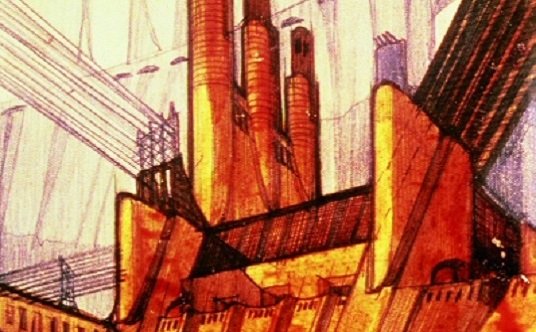

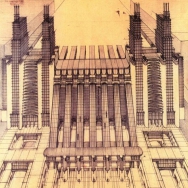
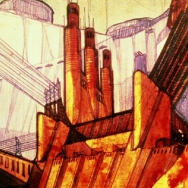
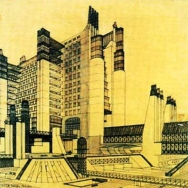
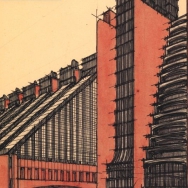
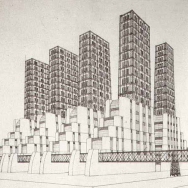
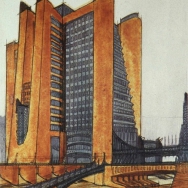

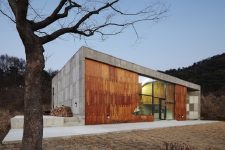
Comment here
Lo siento, debes estar conectado para publicar un comentario.